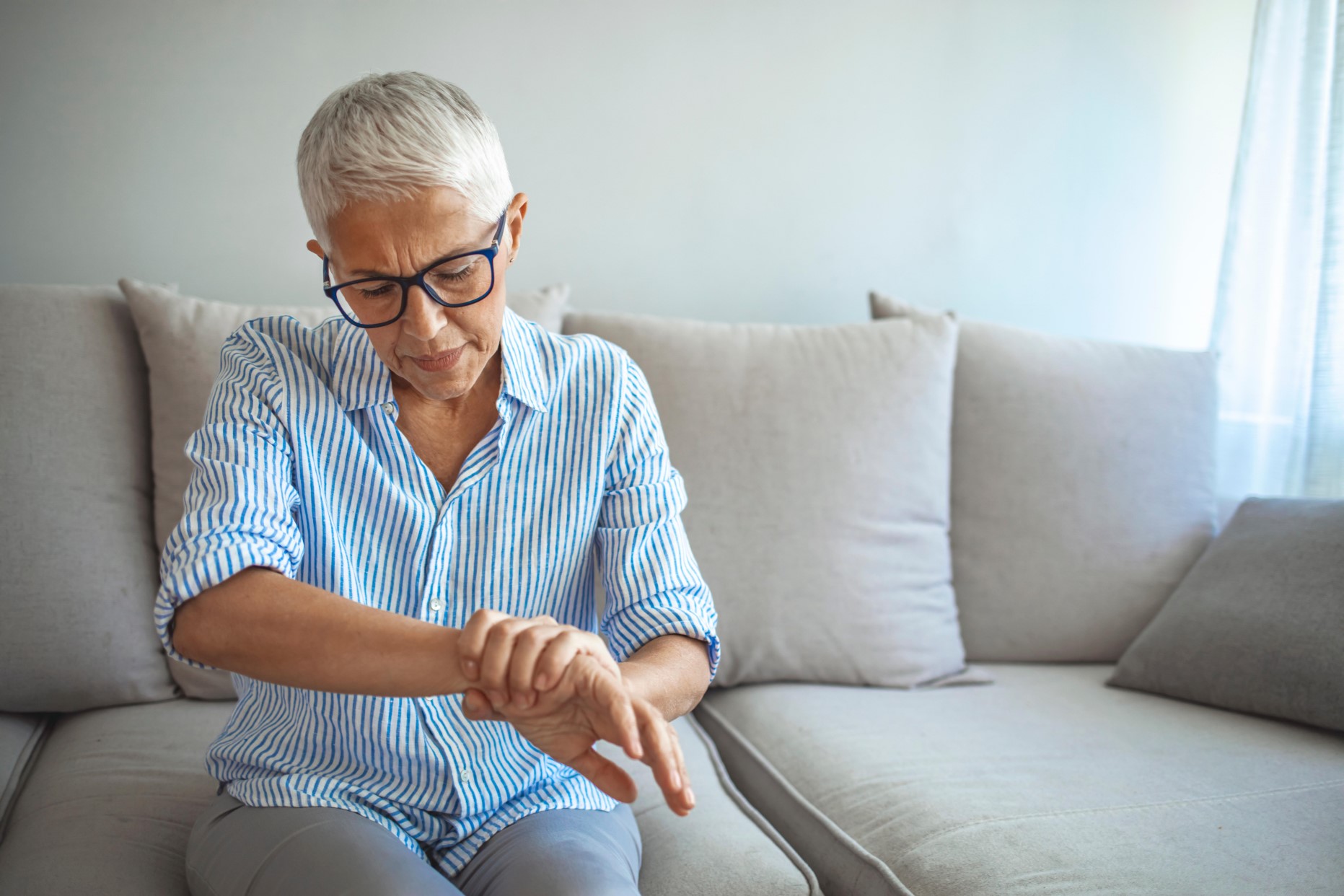Base of thumb arthritis
What is base of the thumb arthritis?
Arthritis or osteoarthritis of the base of the thumb is a very common condition particularly in people over the age of 50 years.
Approximately 40% of post-menopausal females have radiographic changes at the base of the thumb, 10% seek medical treatment and 1% are severely afflicted.
Base of thumb arthritis is more common in females than males, and usually starts over 50 years of age, usually as a result of a previous fracture.
What causes the condition?
There are two types of arthritis; primary and secondary.
Primary is the most common cause and is due to ‘wear and tear’. Abnormal loads across the joint cause the articular cartilage (slippy ends of bones) to wear away, leaving bone on bone ends rubbing together.
Secondary arthritis occurs often after a fracture into the joint causing sharp bone surfaces to rub and wear the joint away.
What are the typical signs?
Pain at the base of the thumb is the most common symptom. Provoking activities include the unscrewing of jars, and pinch grip and turning a key using the thumb often cause pain.
Other symptoms might include:
- Swelling and stiffness at the base of your thumb
- Decreased strength when pinching or grasping objects
- Decreased range of motion
- Enlarged or bony appearance of the joint at the base of your thumb.
How is it diagnosed and treated?
Diagnosis
Your consultant will discuss your symptoms with you and examine your hand for:
- Bony swelling at the base of the thumb - this is prevalent in more advanced cases -and tenderness at the base of the thumb
- ‘Axial Grind Test’ will be performed, whereby the thumb is pushed along its axis towards the base of the thumb
- ‘Reduction relocation test’ which involves pressing the base of the thumb joint with one hand whilst circumducting the end of the thumb with the other hand (performing a circular movement)
- An X-ray will be undertaken where 3 views will be captured: a thumb CMCJ AP (Robert View), an AP and Lateral Wrist. The lateral wrist enables your consultant to look at the alignment of the wrist bones, and in particular the lunate bone to make sure there is no co-existing ligament attenuation in the wrist. The Robert view is the best view to see the joint and notice the abnormal surfaces.
Treatment
In some cases, trigger finger doesn't need treatment and will get better by itself. However, if it doesn’t improve, treatment is required otherwise the finger or thumb may become permanently bent.
Non-surgical treatment: Resting the hand and using painkillers. Using a splint on the affected finger to rest it. A Steroid injection into the sheath may lubricate and also damp down the inflammation. Steroid injections can be repeated a few times. Further attempts may thin the overlying skin and surgery would be advised after a few failed injections.
Surgery: If non-operative techniques have been unsuccessful in providing long-lasting benefits, some patients may elect to undergo surgery.
The aim of surgery is to prevent the two ends of the bone from rubbing against each other. Your consultant will discuss the most suitable treatment for you. The main options are:
- Trapeziectomy – removing the trapezium bone and allowing the space to fill with scar tissue
- Thumb CMCJ Fusion – fusing of the trapezium and thumb metacarpal bones to make a solid joint
- Thumb CMCJ replacement - removing the ends of the bone and inserting a new artificial joint replacement.
Surgery is performed under general anaesthetic or regional anaesthesia (only the arm is made numb). Each of the aforementioned surgeries take between 30 and 40 minutes.
Recovery
This depends on the type of treatment you’ve had, but can take from between 8 and 12 weeks depending on whether you’ve had surgery. Your consultant will be able to advise you on this.
When can I return to normal activities?
- Work - this depends on your individual employment, however if your job mainly involves sitting then you may be able to return immediately. If you have a more active role like, your consultant will be able to advise you on a suitable period of time, however it could take up to six weeks.
- Driving - the hand needs to have full control of the steering wheel in case of emergency. Return to safe control of a vehicle varies between individuals but often patients can drive within the first week.
- Exercise - Once the wounds are dry you can start cardiovascular exercise, usually between 7 and 10 days. It may be several months before you can use your hand for weight training and gripping type activities.

